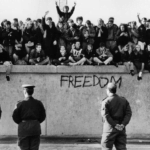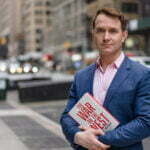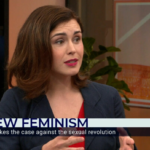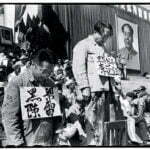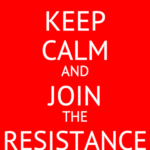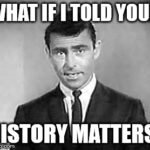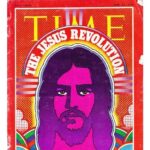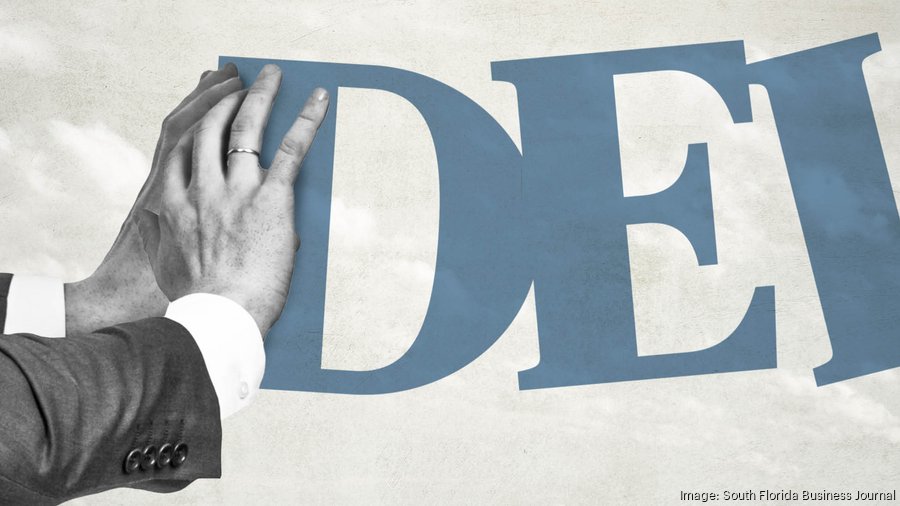
DEI and the Cultural Revolution
Beware this Trojan horse:
There is a real cultural revolution underway. The culture wars have been fought for a number of decades now, and they present a very real threat to the West. The fact that I have over 2500 articles on this matter is but one indication that this has been a key battleground between the radical left and those who think Western civilisation is still worth preserving.
As has been explained so often now, the earlier calls for violent political revolution largely fell on deaf ears. The workers of the world did not rise up and revolt as Marx had predicted. So later Marxists determined that internal evolution through the taking over of the institutions would be the way to achieve what external armed revolution could not.
So now we have the whole gamut of critical race theory, wokism, political correctness, intersectionality, tribalism, victim politics and the like being pushed throughout the West. And by targeting all the major institutions of power and influence – the schools, the media, law, politics, and even the churches – it has been largely quite successful.
All this is part of the attempt by the revolutionary left to remake the West in its own image, and to undermine all things they consider to be toxic and counterrevolutionary. Everything must go, but by using internal subversion and upheaval, much of what is being done can be presented in platitudes and euphemisms.
Consider DEI for example. It sounds pretty good, right? Who is not in favour of Diversity, Equity and Inclusion? Of course, it all depends on what is meant by these terms. Kamala and the Dems in America, and Albo and Labor in Australia for example are constantly using these words. But what they mean by them is not what most of us mean.
The examples of DEI are everywhere to be found, sometimes with really quite tragic consequences. One of the most recent and egregious cases in point almost cost Donald Trump his life. The utter bungling and failures of the US Secret Service to protect the former President at his rally in Butler, PA some 12 weeks ago showed the whole world just how dangerous DEI can be.
Sure, it was not the only reason for this colossal fail by those meant to be protecting Trump, but it was a major component nonetheless. Recall what was the main priority of the then head of the SS, Kimberley Cheatle. DEI was a consuming passion of hers, and her stated goal was to have at least 30 per cent of all personnel female.
Now in many areas, it does not matter if 90 per cent of your workers are female, be it flipping burgers or developing software. But when it comes to protecting the leaders of a nation, it is not quotas that we need, but those who are fully qualified. Merit and not mere numbers is what matters. Many women can fit the bill here, but when the quite short female agents could not even properly protect Trump (he is 6’ 3” after all), then DEI should be left out, and those who are qualified should be the primary consideration.
But that is just one example of many. Hiring people simply to fill quotas is a recipe for disaster. I have written on this matter often. In one such piece I quoted a woman – yes, a woman – who put it this way:
Quotas suck. Women will only be equal when there isn’t an artificial incentive for women to be promoted. If management staffing decisions are made with a frame of ‘we don’t have enough women so we should pick a woman’ then how can a woman ever be respected in that position? If quotas exist, how will women ever be considered worthy of their roles, deserving of them and equal to the task, rather than equal to the quota? https://billmuehlenberg.com/2011/03/09/women-quotas-and-affirmative-action/
Of course it is not just women we are talking about here, but Blacks and others. The noted Black American economist Thomas Sowell has written numerous works on this. Here is just one quote – from his important book Race and Economics:
“Perhaps the greatest dilemma in attempts to raise ethnic minority income is that those methods which have historically proved successful—self-reliance, work skills, education, business experience—are all slow developing, while those methods which are more direct and immediate—job quotas, charity, subsidies, preferential treatment—tend to undermine self-reliance and pride of achievement in the long run.”
And he of course has more recently written on DEI as well. Consider one quote of his on the issue of diversity:
“Diversity” has become one of the most often used words of our time– and a word almost never defined. Diversity is invoked in discussions of everything from employment policy to curriculum reform and from entertainment to politics. Nor is the word merely a description of the long-known fact that the American population is made up of people from many countries, many races, and many cultural backgrounds. All that was well known long before the word “diversity” became an insistent part of our vocabulary, an invocation, an imperative, or a bludgeon in ideological conflicts.


But here I want to finish by quoting from a new book by Christopher Rufo: America’s Cultural Revolution: How the Radical Left Conquered Everything (Broadside Books, 2023). In it he has a chapter on DEI and its role in the Cultural Revolution. He explains how it came about:
From the beginning, the critical race theorists understood that hegemony is achieved not through administrative power; the intellectual coup must be followed by the bureaucratic coup. This is where critical race theory has been most successful. The “activist scholars” and their allies—an entire professional network of social justice activists, diversity trainers, philanthropic foundations, affirmative action administrators, and left-wing human resources professionals—adapted the rhetorical strategies from the universities and turned them into a standardized administrative program that would lend legitimacy, power, financing, and status to their ideology.
The process began with simplification: the academics provided the concepts; the professionals translated them into bureaucratic language. The symmetry between the two expressions—in other words, between theory and praxis—is revealed through a careful reading of the basic terms that compose the acronym of DEI. (pp. 252-253)
He then discusses each term:
First, “diversity.” The term appeals to the verbal connotation of demographic representation. But at a deeper level, the euphemism of “diversity” is built on the intellectual foundations of intersectionality, which argues that the individual represents not only a demographic reality, but a political imperative—that person must check the boxes of identity and also advance the “victim perspective” as an ideology. As Derrick Bell once explained: “The goals of diversity will not be served by persons who look black and think white.” The practical outcome of this policy is the deliberate inversion of the hierarchy of oppression: the “victim perspective” is raised above the “perpetrator perspective” within the institution, and the supposedly “marginalized” individual who represents the favored ideology moves to the center.
Next, “equity.” If diversity is the framework, equity is the method. The word is a deliberate obfuscation. It is a near homonym to the word “equality” but carries an entirely different meaning. The American principle of equality was first proclaimed in the Declaration of Independence, consecrated in blood with the Civil War and the Fourteenth Amendment, and codified into law with the Civil Rights Act, which attempted to create a colorblind system that treated individuals equally under the law. But for the critical race theorists, these documents provided a fig leaf of equality that disguised the reality of continuing racial domination.
The critical race theorists explicitly rejected the American standard of colorblind equality, arguing that equal treatment under the law represents “mere nondiscrimination” and serves as a mask for white supremacy and capitalist oppression. Equity is the other side of the coin. It would replace the regime of individual rights with a regime of group entitlement, calling for “equalizing treatment by redistributing power and resources in order to rectify inequities and to achieve real equality.”
Finally, “inclusion.” Again, the signifier and the signified are in opposition. The word “inclusion” has the surface meaning of tolerance for a wide range of people and opinions. But, following the epistemology of the oppressed, the true meaning of “inclusion” is the regulation of speech and behavior to protect the subjective well-being of the intersectional coalition. Anything that is deemed “exclusive,” or representing the interests of the oppressor, is excluded; anything that is deemed “inclusive,” or representing the interests of the oppressed, is included. This is the logic of racial reasoning, turned into a tautology, managed from above by the bureaucracy. Since the beginning, the critical race theorists argued that the restriction of “racist” and “sexist” speech and behavior was essential to the governance of the university and, by extension, to the governance of society. The bureaucracies internalized this philosophy and used the language of critical race theory—“microaggressions,” “microinequities,” “unconscious bias,” “hate speech”—to construct policies that replaced the rule of free expression with the rule of limited expression.
Together, the acronym for “diversity, equity, and inclusion” represents a new mode of institutional governance. Diversity is the new system of racial standing, equity is the new method of power transfer, inclusion is the new basis of enforcement. All of this could be presented to institutional leadership in a language that appears to be soft, benign, tolerant, and openminded—something that, combined with the threat of accusation, elite administrators were culturally incapable of resisting. (pp. 253-254)
And the chapter’s final paragraphs are just as true of Australia and other Western nations:
If critical race theory should succeed as a system of government, it is easy to imagine the future: an omnipotent bureaucracy that manages transfer payments between racial castes, enforces always-shifting speech and behavior codes through bureaucratic rule, and replaces the slogan of “life, liberty, and the pursuit of happiness” with the deadening euphemism of “diversity, equity, and inclusion.”
This is not yet the regime in America, but unless there is a reversal within the institutions, the slow, hulking machine of critical race ideology will continue to accumulate power and marginalize democratic opposition. Once the public has been sufficiently alienated from the Constitution of 1789—when its heroes have been destroyed and its memories severed from their origins—the Constitution will finally become “merely a piece of paper,” a palimpsest to be written over in pursuit of the “total rupture” with the past. It will become, in the words of Derrick Bell, nothing but “roach powder” used to suffocate and destroy American liberty.
The triumph of the new ideological regime would mean the end of a society oriented, however imperfectly, toward the eternal principles, and the installation of society of racial score-settling and bureaucratic leveling, abandoning the individual to his fate. (pp. 266-267)
Rufo is spot on here. How much longer the West has to go in good measure depends on its citizens waking up to the fact that words and phrases that might superficially sound nice can well be the death knell of a culture. We need to understand the war that we are in and take steps to resist those bent on destroying our very way of life. And that includes resisting the siren sounds of DEI.
[1881 words]






